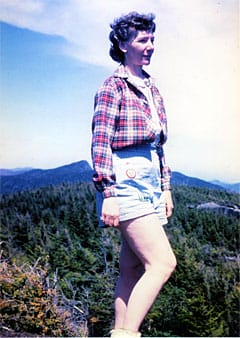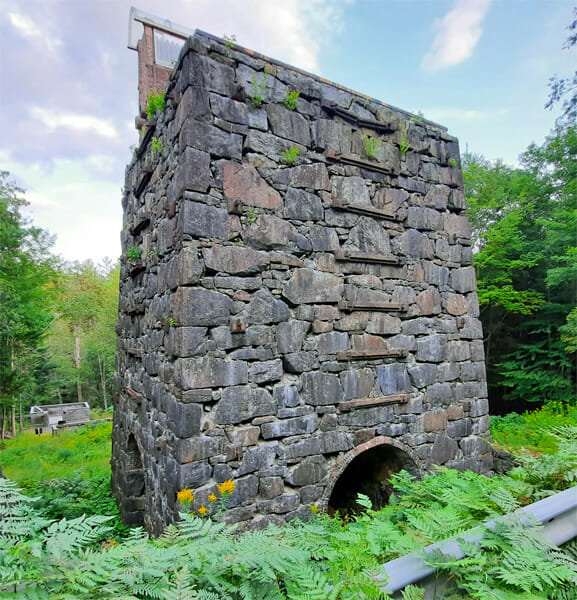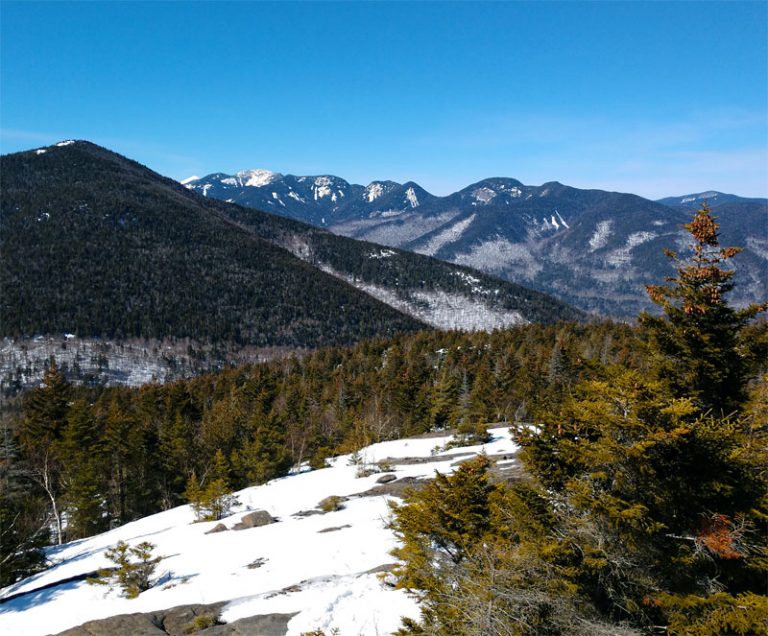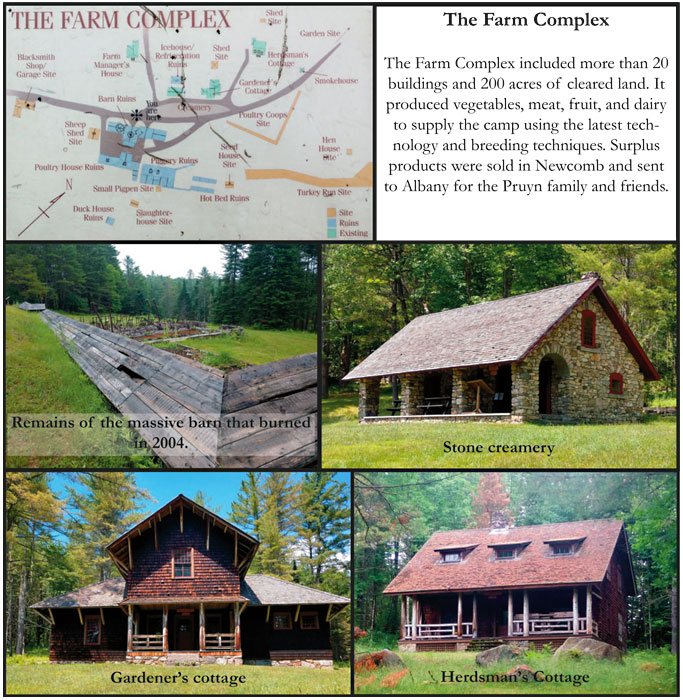The Dixes: Defined by Their Names

NOTE: This is the final installment of the four-part series that explores the people for whom the mountains in the Dix Range were named.
“Names are powerful things. They act as an identity marker and a kind of map, locating you in time and geography. More than that, they can be a compass.” — Nicola Yoon, author, from The Sun is Also a Star
All of us who climb the 46 Adirondack High Peaks develop an inherent familiarity with the mountains and their trails. We have our favorite summits. We know the trails, where the steep sections are, and when we are approaching the areas that are always muddy. We have our own special places to stop for a break, or to enjoy a view. We can almost feel the mountains’ moods on any given day, whether they will be kind to us as we climb them or throw every possible obstacle in our way. We feel a kinship with the peaks as we get to know them. If we climb peaks enough times, we even consider them our friends. We become so familiar with the mountains that their names roll off our tongues without giving it much thought.
But what do we know about those names? When did each peak receive its name? Who chose the name? Why? And for those mountains that are named for a person, who is he, or she, and what did they do to deserve to have a mountain named for them? Do the names of the High Peaks matter?
These questions surfaced on a recent hike in the Dix Range, where four of the five peaks are named for people. The search for answers led to a fascinating bushwhack through not only Adirondack history but U.S. history as well.

Grace Peak and South Dix
Grace Peak
All of the High Peaks received their names from a variety of people and circumstances throughout the 1800s and early 1900s, save for one. The peak previously known as East Dix, the smallest of the mountains in the Dix Range at 4,012 feet, underwent the most recent name change when it was officially renamed Grace Peak on June 14, 2014. The United States Board of Geographic Names approved the Adirondack Forty-Sixers’ petition to rename East Dix in honor of Grace Leach Hudowalski, the first woman to climb the 46 High Peaks and a founding member, first president, and long-time historian of the club.

While Grace’s importance to the Forty-Sixers organization and to the Adirondacks should be familiar to fellow 46ers, her legacy deserves repeating. At the age of 16, Grace climbed Mount Marcy in August 1922. It was a defining moment in her life. Suffering through heavy rain and torturous black flies on the three-day hike, she refused to quit. When she finally reached the summit, the clouds lifted for a moment revealing Lake Tear of the Clouds—the source of the Hudson River—a mile below. From that point on she recalled, “I never talked about anything but mountains. I wrote about them. I gave speeches about them.”

Grace became the first woman and ninth person to climb all 46 of the Adirondack High Peaks when she summited Mount Esther on August 26, 1937. It was fitting that Grace finished her round of the 46 on Esther Mountain as, at the time, it was the only High Peak named for a woman — Esther McComb, the 15-year-old girl who was credited with the first ascent of the peak in 1839.
Grace was instrumental in the formation of the Adirondack Forty-Sixers (46ers) in 1948 and became the club’s first president. For more than 60 years she served as the club’s historian, corresponding with and mentoring thousands of hikers who were aspiring to become 46ers. Grace considered climbing the 46 to be a life-affirming and often life-altering accomplishment that deserved introspection. Her love and respect for the mountains and her belief that spending time in the natural environment was vital to a healthy, balanced life was undeniable. She encouraged hikers to write about what they saw and felt as they climbed and to share their experience with others. “Any mountain worth climbing is worth talking about,” was one of her favorite sayings.

Grace was a pioneer. She engaged in a rigorous outdoor avocation in which relatively few women participated, and she encouraged women “…to get out of doors, to get lots of fresh air to bring color to your cheeks and zest in your step. It’s more outdoor exercise we women need.” She also had a high-ranking professional position, a rarity for a woman at the time, as Travel Promotion Supervisor for the New York State Commerce Department. This job, which she held from 1948 to 1961, provided her with a platform to publicize the recreational opportunities in the Adirondack Region to a large audience.
Active in the early days of the Adirondack Mountain Club (ADK), Grace served as contributing editor for the club’s publication Ad-i-ron-dac, (now Adirondac). At its annual banquet on March 13, 2004, the ADK conferred on Grace its highest honor, the Trail Blazer Award (in absentia as Grace passed away that same day at the age of 98). To honor her lifelong dedication to the Adirondacks, the 46ers, led by Doug Arnold, #4693W, embarked on a ten-year–eventually successful–effort to name an Adirondack High Peak in her honor.
South Dix


At an elevation of 4,060 feet, South Dix is now the only peak in the Dix Range that does not have a distinctive name. It remains identified only by its position in comparison to the other four peaks. In his book Peaks and People of the Adirondacks, Russell Carson credits the naming of both South and East Dix to the Marshalls. Prior to the Marshalls’ climbs of the 46 High Peaks the two peaks were not identified on any maps. Carson said, “The most interesting fact about these two mountains is that their names are not important enough to be retained and that they can be given distinctive titles, when the right occasion comes, without violation of old-established names.” The “right occasion” came along for the renaming of East Dix to Grace Peak in honor of Grace Hudowalski. Perhaps a deserving occasion will come along for the renaming of South Dix. One suggestion is to rename South Dix “Carson Peak,” in honor of the author of the definitive book on the history of the peaks and people in the Adirondack High Peaks Region.
Names remind us of the past, how the United States came together as a nation and the people who changed the course of history. Proof positive that as Nicola Yoon’s quote reminds us, “Names are powerful things, … locating you in time and geography,” and, like a compass, pointing us toward a future.
References:
Carson, Russell, M. L. Peaks and People of the Adirondacks. The Adirondack Mountain Club, Glens Falls, NY 1986.
The Conservationist. New York State Department of Environmental Conservation. May-June, 1985.
Heaven Up-h’isted-ness! The History of the Adirondack Forty-Sixers and the High Peaks of the Adirondacks. Adirondack Forty-Sixers, Inc. 2011.
— SEL, 2023

Hough [Cone, Middle Dix, Marshall]
If the mountain Hough was human, it might be suffering from an identity crisis as it has undergone several name changes over the years. In the 1870s Verplanck Colvin, Superintendent of the Adirondack and State Land Surveys, identified the mountain now known as Hough as “Cone Mountain” on several of his sketches. In the early 1920s, Robert and George Marshall and Herb Clark, the first 46ers, referred to it as “Middle Dix” or “Little Dix.” Russell Carson, author of the 1927 Peaks and People of the Adirondacks, a comprehensive history of the naming and first ascents of each of the High Peaks, named the mountain “Marshall,” in honor of Robert and George Marshall, who “made the first recorded ascent of this peak, …” on August 13, 1921.
Although the Marshalls objected to having a peak named for them, the Forty-Sixers of Troy, the precursor of today’s club, embraced the name. In 1940, a year after the death of Robert Marshall, the Forty-Sixers of Troy petitioned the New York State Board on Geographic Names for official recognition of the names of several High Peaks including the mountain in the Dix Range that they called Mount Marshall. However, the Troy club was informed that the mountain they knew as Marshall had been officially named Hough Peak on both the state and federal levels, in honor of Dr. Franklin B. Hough. Though not widely publicized, New York State Conservation Department Commissioner Lithgow Osborne had submitted the name change request in 1937 at the time of the Fifty Years of Conservation Celebration.1 So, who was Hough? And should our peak be happy with its final, official appellation?

Dr. Franklin Benjamin Hough (1822-1885), the son of a doctor, was born in Martinsburg (Lewis County, on the western edge of the Adirondacks), New York. As a child he enjoyed taking long walks through the Adirondack forests studying and recording the flora and geology of the area. He graduated from Union College and studied medicine at Western Reserve Medical College. Like his father he became a medical doctor and set up a practice in New York’s St. Lawrence County. He eventually abandoned medicine to concentrate on research in natural history and writing projects. He returned to medicine for a few years during the Civil War when he was called to serve as a surgeon for the 97th New York Volunteer Infantry.
Following the Civil War Hough returned to his research on the natural environment. As one of seven members of the 1872 New York State commission on establishing a state park in the Adirondacks, Hough studied the alarming deforestation in northern New York due to uncontrolled lumbering. He wrote and presented a paper “On the Duty of Governments in the Preservation of Forests” that summarized his findings and highlighted the need to adopt forest conservation practices. He also advocated for the establishment of forestry schools that would develop guidelines and offer training on protecting, preserving, and managing woodlands. As a result of his research, along with several years of lobbying efforts, the United States Congress created the Office of Special Agent in the U.S. Department of Agriculture in 1876 to assess the state of the forests and the lumber industry. Hough was chosen to head the office. He conducted additional surveys and research throughout the United States the following year and presented his recommendations in his Report on Forestry, a 650-page volume that was printed in 1878.

In 1881, the Division of Forestry, the precursor to the United States Forestry Service, was created within the Department of Agriculture. Hough was appointed as its first chief. He served in that position until 1883, when he was replaced due to unresolvable differences with the Commissioner of Agriculture. But he continued his research and writing, particularly on the management of public forest lands. In 1884 he became involved in a renewed effort to establish a forest preserve in New York State and played a major role in the passage in May 1885 of the law that created Forest Preserves in the Adirondacks and Catskills. The now famous mandate remains in the legislation today: “The lands now or hereafter constituting the forest preserve shall be forever kept as wild forest lands….”2 Hough died one month later at his home in Lowville, NY, shortly before his 63rd birthday. For his leadership in promoting the management and protection of public forest land Hough earned the title “The Father of American Forestry.”
Undoubtably Hough Peak is pleased to carry the moniker of the man whose vision and tenacity led to the establishment of the Adirondack Forest Preserve.
- Eventually the Forty-Sixers were successful in securing a peak named in honor of Robert Marshall – the western most peak in the MacIntrye Range, which they referred to as Herbert. That effort took 40 years to complete — a story for another day.
- The 1885 law that created the Adirondack and Catskill Forest Preserves was subsequently approved as an amendment to New York State’s Constitution in 1894.
Resources
https://foresthistory.org/research-explore/us-forest-service-history/people/chiefs/franklin-b-hough/
https://foresthistory.org/wp-content/uploads/2020/02/Hough_F_B_1.pdf
https://digitalcollections.union.edu/s/union-notables/item/1008#?cv=&c=&m=&s=&xywh=0%2C-35%2C299%2C299

Macomb
Macomb, the second highest peak in the Dix Range at 4,405 feet, was named in the mid-1800s for Brigadier General Alexander Macomb to honor his victory over the British at Plattsburgh, NY, on September 11, 1814, during a crucial battle in the War of 1812. The name first appeared in Ebenezer Emmons’ Natural History of New York in 1842. However, definitive details on who suggested the name and when have been lost to history. There are two theories, but the one that has been accepted as most likely is that the peak was named as a tribute to Brigadier General Macomb’s military success.

Macomb was born in Detroit in 1782, when the city was controlled by the British. His family moved to New York City where his father, also with the first name of Alexander, gained prominence as a land speculator. In 1798, at the age of 16, Macomb joined a New York militia company. He received numerous commissions throughout the next 12 years, rising to the rank of brigadier general in command of the land forces in northern New York during the War of 1812.
During September 1814 the British planned a two-pronged attack at Plattsburgh: on land along Lake Champlain’s shore, and a naval assault on the lake. General Macomb was tasked with defending the frontier of northern New York on land. Lieutenant Thomas Macdonough commanded the 14-ship American naval fleet on Lake Champlain.
A British force of 8,000 to 10,000 men under the command of Lieutenant General Sir George Prevost greatly outnumbered Macomb’s forces of 1,500 regulars and roughly 2,500 militia. Macomb developed a strategy to delay the advance of the British ground troops for as long as possible. His men cut down trees to hide roads, changed road signs, and set forests and buildings ablaze near the British encampments. On the day of the battle Macomb’s troops launched a series of skirmishes with the British, harassing the enemy without engaging in a full attack.

While the land battle was underway, a fierce naval battle commenced between Captain Macdonough and the British ships under the command of Captain George Downie. Downie sailed his ships directly at the American fleet. With long-range guns the British had the Americans at their mercy. As luck, or fate, would have it, the wind on Lake Champlain that day suddenly died down, disrupting the British ships’ formation. This gave Macdonough time to maneuver his squadron to an advantageous position to inflict heavy damage on the British ships. During the cannon fire Captain Downie, aboard the British flagship HMS Confiance was killed. Shortly thereafter the British fleet surrendered.
When informed of the fate of the naval battle, British land commander Prevost called off his attack and withdrew his army, knowing that without naval support his land troops would not be able to advance beyond Plattsburgh. The combined land and naval American victories proved to be a turning point in the War of 1812. The victory greatly influenced the terms of peace drawn up at the Treaty of Ghent, thus ending the war.
While today historians generally credit the victory at Plattsburgh to Macdonough’s defeat of the British fleet on Lake Champlain, at the time the American press gave the title “The Hero of Plattsburgh” to Macomb. He was promoted to major general for his heroism and received both the Thanks of Congress and a Congressional Gold Medal. He was promoted to commanding general of the United States Army serving in that position from May 29, 1828, until his death on June 25, 1841.


In addition to having a mountain named in his honor, a street in Plattsburgh and one of the dormitories on the Plattsburgh State College campus bear his name, as did the World War II Liberty ship SS Alexander Macomb.
The second story about the naming of Macomb Mountain, which has since been refuted, suggests that the mountain was named by a lumberman for General Macomb’s father. A wealthy merchant, fur trader, and land speculator, Macomb, Sr. became the largest landowner in New York State with the 1791 purchase of 3,600,000 acres in northern New York for a price of 12 cents an acre. Known as Macomb’s Purchase, the area included all the lands that now make up Lewis, Jefferson, and St. Lawrence counties, as well as portions of Franklin, Herkimer, and Oswego counties.
References:
https://www.adirondack.net/history/battle-of-plattsburgh
https://www.britannica.com/event/Battle-of-Plattsburgh
https://localwiki.org/hsl/Macomb%27s_Purchase
https://hamiltoncs.org/forever-wild/ashipton/macomb/
Next in the series, Hough
— SEL 6/5/2023
Dix’s Peak

At 4,857 feet, Dix Mountain is the highest peak in the range that bears the same name. Professor Ebenezer Emmons, the state geologist of New York who headed the geological survey of northern New York in 1837, named the mountain “Dix’s Peak” in honor of John Adams Dix. The name first appeared in Emmons’ 1838 report of the survey expedition. At that time, Dix was serving as Secretary of State in the administration of New York State Governor William Learned Marcy, whose name Emmons attached to New York’s highest peak on the first recorded climb to its summit on August 5, 1837. It’s easy to speculate why Emmons chose those two names for the two peaks: Dix recommended the survey of northern New York to Governor Marcy, and Marcy funded the project and chose Emmons as its head. Despite their interest in surveying northern New York, it is unlikely that either Dix or Marcy visited the Adirondacks.
On various iterations of maps over the years the name Dix’s Peak was changed to Dix Mt., or Dix Mtn. Today’s hikers just refer to the mountain as Dix.

John Adams Dix (1798 – 1879), born in New Hampshire, had a long and distinguished career in the military and as a public servant. He served as an ensign in the Canadian frontier campaign during the War of 1812, and as a major general during the Civil War. In state government he was New York State Adjutant General, Secretary of State, and State Superintendent of Schools. In 1872, at the age of 74, he was elected the 27th governor of New York serving from 1873 through 1874. On the national level Dix served in the United States House of Representatives and Senate, as Secretary of the Treasury under President James Buchanan, and as U.S. Minister to France. Dix was a staunch abolitionist and was credited with preventing Maryland from seceding from the Union prior to the Civil War. In addition to his public service he was the first president of the Union Pacific Railroad in the 1860s during the construction of the First Transcontinental Railroad.
Dix’s Peak was first climbed in 1807, thirty years before it was given a name, by a surveyor named Rykert (first name unknown), who ran the north line of Township 49, Totten and Crossfield Purchase1, making it the second major peak in the Adirondacks to have a verifiable first ascent. The first of the 46 High Peaks to be climbed was Giant of the Valley by Charles Broadhead and his survey party on June 2, 1797.
- In 1771, prior to the Revolutionary War, Joseph Totten and Stephen Crossfield, on behalf of several other investors including Ebenezer and Edward Jessup, petitioned the royal governor of New York for the right to obtain title for England’s King George III, a tract of land encompassing about one million acres in the south-central Adirondacks. The land was purchased from the Native American tribes who hunted in the area. Following the Revolutionary War, all lands held by the British Crown became property of the individual states that made up the newly formed United States of American. A number of land surveys were conducted prior to and after the war to define the boundaries of the tract, and several lawsuits ensued to determine the actual owners of specifics tracts.
Next in the series, Macomb
— SEL 4/20/2023































